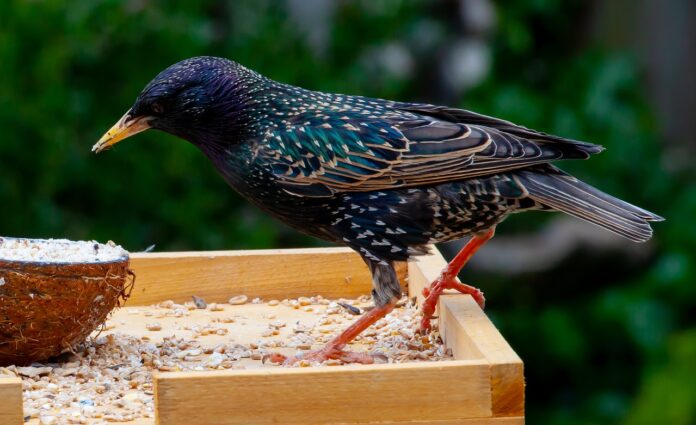“Dashing through the snow” is a phrase from the song “Jingle Bells” that often brings fun joyful memories this time of year.
Snow brings birds dashing into your dairy barns. These nuisance birds, mostly starlings, consume cow grain and leave disease-ridden droppings that are costly and creates a smelly unsightly mess.
Ohio has one of the highest breeding densities of European starlings in the US. Flocks can range from a few hundred to over 10,000 on a single farm.
Starlings are known to fly 15 to 30 miles from roosting sites to a desirable feed source, like your dairy cows’ TMR ration. On dairy farms, starlings consume grain and leave droppings, which results in feed and milk production losses.
Starlings spread disease through droppings and pose health risks to livestock and humans. Humane and effective bird prevention measures can reduce and often eliminate costly, unsightly and disease-causing droppings that can affect the dairy herd.
Feed loss
Starlings consume the grain and protein ingredients in dairy cow diets and reduce the nutrient content of the remaining TMR. A small flock of 1200 starlings can consume up to one ton of protein and grain per month from a 200-cow dairy farm. Various studies have shown the economic cost of bird infestation in excess of $8,000/year. Health losses and disease risk can increase this loss.
Health and disease loss
Ohio State research from 2008 has shown that bird droppings transmit E. Coli, salmonella, crypto coccidia and histoplamosis. These diseases reduce cow health and intestinal health and increase the risk of mastitis. Several strains of salmonella exist and increase the risk of calf death and disease.
Nuisance bird prevention and control
Prevention methods of bird infestation must start before snowfall and heavy infestations of birds. Prevention includes netting, visual scare devices, distress calls, roosting adaptations and health modifiers. Check with state wildlife divisions for regulations regarding control of nuisance birds before implementing control measures.
Nets will not entangle birds. Netting may be draped across the front of buildings; fasten it tightly from above windows to below the ledge to discourage perching. Visual scare devices and distress calls must be modified regularly throughout the year to be effective.
Commercial sources of prevention tools can be evaluated at the websites birdbgone.com, birdgard.com and the Ohio Department of Natural Resources, wildlife.ohiodnr.gov/.
Roosting adaptations include modifying the roosting surfaces with an angle of 60 degrees or greater. Birds prefer to perch on flat surfaces and angled surfaces reduce perching. Wood or metal sheathing cut at an angle can also be added to the problem area. Installation of porcupine wire on ledges and rails where birds roost will reduce roosting.
Thinning tree branches around buildings can remove perch sites and reduce a source of wind protection, which may force the birds to move to another site. Combinations of noise (AM/FM radio, wind chimes, firecrackers, banging pots and pans, etc.) and visual stimuli (colored flags, reflective tape, rotating blank CD’s, revolving lights, balloons, replicas of hawks and owls, etc.) used persistently can evict birds. Control measures should be initiated and modified at various times throughout the year.
The ODNR Division of Wildlife provides a list of commercially approved nuisance wild animal control operators in your respective Ohio county. The Ohio list has over 400 commercial nuisance animal control operators, some of which may be licensed to manage bird control on commercial livestock farms. The division also has information on options for prevention of nuisance birds.
Thanks to our dairy farmers who provide a clean, low-stress environment for their cows. Because they provide such good care to their cows, we can each enjoy delicious and nutritious dairy products like eggnog, cheese, cream latte and ice cream in this Christmas season. Cheers to our dedicated dairy farmers for keeping cows happy with a clean, dry and comfortable environment.













